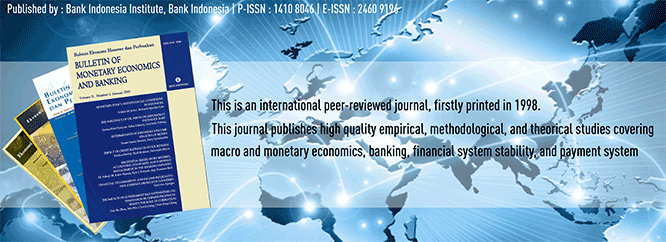
Document Type
Article
Abstract
This paper analyzes the impact of exchange rate fluctuation on the output and price in two different regimes. The model employed distinguishes four different sources of impacts on the output and price, namely the anticipated and the un-anticipated exchange rate movement, the aggregate demand and the aggregate supply shock.The result confirms the impact of the exchange rate regime switch on how the exchange rate influences the output. The net impact of Rupiah depreciation will expand the output, indicating the dominance of the aggregate the demand shock through the competitive advantage than the aggregate supply shock through import price effect.The regime switch also alters the effectiveness of the monetary and the fiscal policy on the output. The magnitude of monetary and fiscal policy is much larger than the exchange rate impact on output, both managed and free floating regime.Keywords: exchange rate, anticipated vs. unanticipated depreciation, supply vs. demand channels.JEL Classification: F41, F43, F31
Recommended Citation
Husman, Jardine A
(2007)
"DAMPAK FLUKTUASI NILAI TUKAR TERHADAP OUTPUT DAN HARGA: PERBANDINGAN DUA REZIM NILAI TUKAR,"
Bulletin of Monetary Economics and Banking: Vol. 10:
No.
1, Article 3.
DOI: https://doi.org/10.21098/bemp.v10i1.217
Available at:
https://bulletin.bmeb-bi.org/bmeb/vol10/iss1/3
First Page
3
Last Page
22
Creative Commons License

This work is licensed under a Creative Commons Attribution-NonCommercial 4.0 International License
Country
Indonesia
Affiliation
Bank Indonesia







